 W
WThe Anglo–Cherokee War, was also known from the Anglo-European perspective as the Cherokee War, the Cherokee Uprising, or the Cherokee Rebellion. The war was a conflict between British forces in North America and Cherokee bands during the French and Indian War. The British and the Cherokee had been allies at the start of the war, but each party had suspected the other of betrayals. Tensions between British-American settlers and Cherokee warriors of towns that the pioneers encroached on, increased during the 1750s, culminating in open hostilities in 1758.
 W
WThe Battle of Kloster Kampen was a tactical French victory over a British and allied army in the Seven Years' War. The Allied forces were driven from the field.
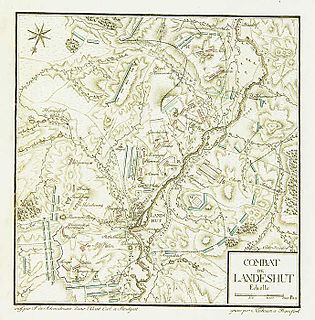 W
WThe Battle of Landeshut was an engagement fought on 23 June 1760 during the Third Silesian War.
 W
WThe Battle of Liegnitz on 15 August 1760 saw Frederick the Great's Prussian Army defeat the Austrian army under Ernst von Laudon during the Third Silesian War.
 W
WThe Battle of the Thousand Islands was an engagement fought on 16–24 August 1760, in the upper St. Lawrence River, among the Thousand Islands, along the present day Canada–United States border, by British and French forces during the closing phases of the Seven Years' War, as it is called in Canada and Europe, or the French and Indian War as it is referred to in the United States.
 W
WThe Battle of Wandiwash was a decisive battle in India during the Seven Years' War. The Count de Lally's army, burdened by a lack of naval support and funds, attempted to regain the fort at Vandavasi, now in Tamil Nadu. He was attacked by Sir Eyre Coote's forces and decisively defeated. The French general Marquis de Bussy-Castelnau and the French were then restricted to Pondichéry, where they surrendered on 22 January 1760. Wandiwash is the Anglicised pronunciation of Vandavasi.
 W
WThe Battle of Warburg was a battle fought on 31 July 1760 during the Seven Years' War. The Battle was a victory for the Hanoverians and the British against the French. British general John Manners, Marquess of Granby achieved some fame for charging at the head of the British cavalry and losing his hat and wig during the charge. The French lost 1500 men, killed and wounded, around 2,000 prisoners and ten pieces of artillery.
 W
WThe Battle of Bishops Court, also known as The Defeat of Thurot, was a naval engagement that took place 28 February 1760, during the Seven Years' War, between three British ships and three French ships. The French force under famed commander François Thurot were brought to battle in the Irish sea between the Isle of Man and the coast of Ireland at 9 am. After a close-fought action, Thurot's force was battered into submission, with his ships dismasted and reduced to a sinking condition. Thurot was shot through the heart and died during the action. The British took all three French ships, completing victory.
 W
WThe Burmese–Siamese War (1759–1760) was the first military conflict between the Konbaung Dynasty of Burma (Myanmar) and the Ban Phlu Luang Dynasty of Siam (Thailand). It reignited the centuries-long warfare between the two states that would go on for another century. The Burmese were "on the brink of victory" when they suddenly withdrew from their siege of Ayutthaya because their king Alaungpaya had fallen ill. He died three weeks later, ending the war.
 W
WThe Battle of Carrickfergus took place in February 1760 in Carrickfergus, Kingdom of Ireland during the Seven Years' War. A force of 600 French troops landed under the command of the Privateer François Thurot, overwhelmed the small garrison of the town, and captured its castle.
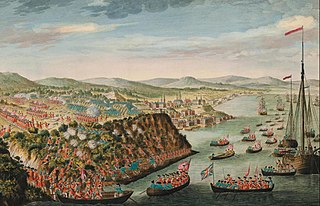 W
WThe Conquest of New France was the British military conquest of New France during the Seven Years' War. The conquest was undertaken by the British as a campaign in 1758, with the acquisition of Canada made official in the Treaty of Paris that concluded the Seven Years' War.
 W
WThe Siege of Dresden took place in July 1760 during the Third Silesian War when a Prussian force led by Frederick the Great unsuccessfully besieged the city of Dresden in Saxony.
 W
WThe Battle of Echoee, or Etchoe Pass, was a battle on June 27, 1760, between the British and colonial force under Archibald Montgomerie and a force of Cherokee warriors under Seroweh. The encounter took place near the present-day municipality of Otto, in Macon County, North Carolina.
 W
WThe Montreal Campaign, also known as the Fall of Montreal, was a British three-pronged offensive against Montreal which took place from July 2 to 9 September 1760 during the French and Indian War as part of the global Seven Years' War. The campaign, pitted against an outnumbered and outsupplied French army, led to the capitulation and occupation of Montreal, the largest remaining city in French Canada.
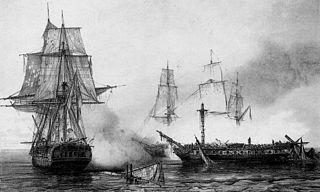 W
WThe Battle of Neuville, or Pointe-aux-Trembles, was a naval and land engagement that took place on 16 May 1760 during the French and Indian War on the north shore of the Saint Lawrence River, near the village of Neuville, in New France, during the French siege of Quebec. A relief force of the Royal Navy, having forced a passage down the Saint Lawrence, managed to destroy the French ships led by Jean Vauquelin assisting in the siege. The British victory forced the French under Chevalier de Lévis to raise the siege and to withdraw attempts to retake Quebec City.
 W
WThe Pomeranian War was a theatre of the Seven Years' War. The term is used to describe the fighting between Sweden and Prussia between 1757 and 1762 in Swedish Pomerania, Prussian Pomerania, northern Brandenburg and eastern Mecklenburg-Schwerin.
 W
WThe 1760–1761 Siege of Pondicherry was a conflict in the Third Carnatic War, as part of the global Seven Years' War. Lasting from 4 September 1760 to 15 January 1761, British land and naval forces besieged and eventually compelled the French garrison defending the French colonial outpost of Pondicherry to surrender. The city was running low on supplies and ammunitions when French commander Lally surrendered. It was the third British victory in the region that was under the command of Robert Clive.
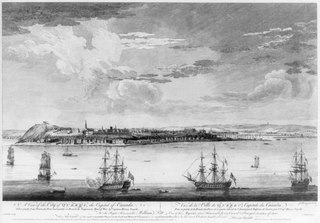 W
WThe Siege of Quebec, also known as the Second Siege of Quebec, was an unsuccessful French attempt to retake Quebec City in New France which had been captured by Britain the previous year. The siege lasted from 29 April until 15 May when British ships arrived to relieve the city which compelled the French commander Francis de Gaston, Chevalier de Lévis to break off the siege and retreat.
 W
WThe Raid on Berlin took place in October 1760 during the Third Silesian War when Austrian and Russian forces occupied the Prussian capital of Berlin for several days. After raising money from the city, and with the approach of further Prussian reinforcements, the occupiers withdrew. There were later allegations that the Russian commander Count Tottleben had received a personal bribe from the Prussians to spare the city, and he was subsequently tried and found guilty of being a spy.
 W
WThe Battle of Restigouche was a naval battle fought in 1760 during the Seven Years' War on the Restigouche River between the British Royal Navy and the small flotilla of vessels of the French Navy, Acadian militia and Mi'kmaq militias. The loss of the French vessels, which had been sent to support and resupply the troops in New France after the fall of Quebec, marked the end of any serious attempt by France to keep hold of their colonies in North America. The battle was the last major engagement of the Mi'kmaq and Acadian militias before the Burying of the Hatchet Ceremony between the Mi'kmaq and the British.
 W
WThe Battle of Sainte-Foy, sometimes called the Battle of Quebec, was fought on April 28, 1760 near the British-held town of Quebec in the French province of Canada during the Seven Years' War. It was a victory for the French under the Chevalier de Lévis over the British army under General Murray. The battle was notably bloodier than the Battle of the Plains of Abraham of the previous September, with 833 French casualties to 1,124 British casualties. It was the last French victory in North America.
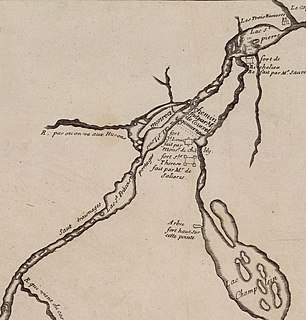 W
WThe Sainte-Thérèse Raid was a military raid on the town of Sainte-Thérèse in French Canada conducted by British elite forces known as Rogers' Rangers that took place during the French and Indian War from 3 to 18 June 1760. Led by Robert Rogers the raid was a pre-emptive strike ordered by Major General Jeffery Amherst as a prelude to his three pronged attack on Montreal the following month.
 W
WThe Siege of Fort Loudoun was an engagement during the Anglo-Cherokee War fought from February 1760 to August 1760 between the warriors of the Cherokee led by Ostenaco and the garrison of Fort Loudoun composed of British and colonial soldiers commanded by Captain Paul Demeré.
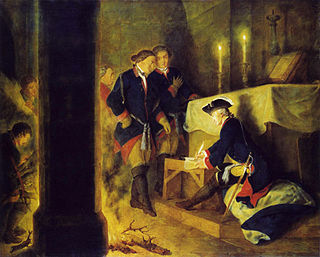 W
WIn the Battle of Torgau on 3 November 1760, King Frederick the Great's Prussian army fought a larger Austrian army under the command of Field Marshal Leopold Josef Graf Daun. The Prussians won a costly victory in one of the bloodiest battles of the Third Silesian War.